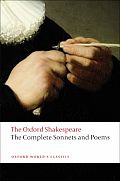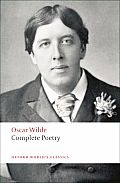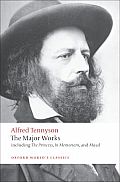<!--[if gte mso 9]>
Normal 0 false false false EN-US X-NONE X-NONE MicrosoftInternetExplorer4 <![endif]-->
Here we are—a new year, a clean slate, all kinds of good things on the horizon! I have so many plans and ideas, but as I mentioned in my last post I want to pace myself a little better this year, and keep my goal list down to just three items. Over the weekend I had some time to sit down and make some decisions about what those three goals would be. In no particular order, the winners are:
1. Edit and rewrite my next novel. As soon as my synopsis and outline for The Abyssal Plain--the literary novel I finished last year--are ready for submission (hopefully by the end of the month) I want to start working on book #10: Ghazal. Last fall I re-read the first draft for the first time in a year, and was happy to discover that most of the editing will simply be improving some of my word choices (stronger verbs, etc.), cleaning up typos, and adding a small amount of text to help clarify the plot.
2. Work on a long-term art project. Prior to this year, the best word to describe my approach to art-making would be “scattered.” “Unfocused” might work even better. My haphazard style (aka "dabbling") is the result of loving absolutely every art material and technique I can get my hands on: collage, watercolors, acrylic, clay, every type of pencil or crayon or pastel imaginable that I then use on so many different types of papers, boards, and fabric supports that I could probably write a comprehensive thesis on the subject.
What I haven’t done is follow any kind of serious idea or direction. I like painting cats, dogs, landscapes, faces, flowers, trees, ferrets, even my art supplies when I'm desperate—but none of it really makes for a coherent body of work. Although I never want to box myself in to the point that I give up drawing ferrets, I still want to find some kind of artistic voice this year. In other words, I want to create a series. And the strongest subject that is calling to me right now is: doorways. Using a variety of mediums and supports, I want to explore open doorways, closed doors, antique doors, doors decorated for the seasons, doors in foreign lands and climates. The concept of doors (and the houses they belong to) is so rich in metaphor and possibility that it will be a challenge to know when to stop!
3. Sketch as much as possible, and add freewriting to my drawings.Despite my concentration on doorways, I still want to keep up a sketching habit, hopefully with even more vigor than in previous years. After all, a series of doors all on their own can get a little stale. For that reason, each door will need it’s own personality: a kitty on the stair, a container of roses under the streetlight, a basket of freshly-picked tomatoes. To do that with any kind of finesse, I’ll need to practice. And to make sure I get in my daily writing practice, I plan to add freewriting to my sketches. I can’t tell you how energized I am about these goals and plans. The best part is I don’t need any new supplies, LOL! Just the faith and confidence to say “yes” to every new drawing, every new page.
Tip of the Day: Never underestimate the power of brainstorming. To make my list of three goals I actually had to brainstorm a list of about twenty. There was a lot I wanted to do—way too much and much more than anyone could handle with any kind of joy or enthusiasm. But I couldn’t have found the three that really appealed to me without writing it all down first.
 May is Asian Heritage Month and is a time to celebrate the arts and cultures of Asia. Poetic forms arise out of a cultural group’s language and can sometimes work well in another language like English with some modification and changes. Poetic forms can also be used as a means of expression of one’s cultural identity or sensibility. Over the weekend at a conference I attended, I had a chance to listen to poet Sheniz Janmohamed talk about the ghazal, a poetic form originating in Arabic, and later made famous by Persian poets Rumi and Hafiz. For Janmohamed, learning about the ghazal form and its traditions lead eventually to her own ghazal writing in English. The ghazal was a way to connect her with her South Asian heritage and to deepen her knowledge and awareness of the rich potentials of the form as it could be explored in English. The result of her work is her book Bleeding Light, TSAR publications, 2010. Of course, you don’t have to be South Asian to write a ghazal; it is a form like any other and artists are always interested in experimenting with forms! However, because I am myself a poet of Asian background, I appreciate those artists who plumb the depths of their cultural traditions and find new hybrid
May is Asian Heritage Month and is a time to celebrate the arts and cultures of Asia. Poetic forms arise out of a cultural group’s language and can sometimes work well in another language like English with some modification and changes. Poetic forms can also be used as a means of expression of one’s cultural identity or sensibility. Over the weekend at a conference I attended, I had a chance to listen to poet Sheniz Janmohamed talk about the ghazal, a poetic form originating in Arabic, and later made famous by Persian poets Rumi and Hafiz. For Janmohamed, learning about the ghazal form and its traditions lead eventually to her own ghazal writing in English. The ghazal was a way to connect her with her South Asian heritage and to deepen her knowledge and awareness of the rich potentials of the form as it could be explored in English. The result of her work is her book Bleeding Light, TSAR publications, 2010. Of course, you don’t have to be South Asian to write a ghazal; it is a form like any other and artists are always interested in experimenting with forms! However, because I am myself a poet of Asian background, I appreciate those artists who plumb the depths of their cultural traditions and find new hybrid ized ways of expressing themselves through traditional forms, particularly non-western ones.
ized ways of expressing themselves through traditional forms, particularly non-western ones.
An example of a poet playing with traditional Japanese forms — haiku and senryu — is Richard Stevenson, who has compiled a book of poems called Casting Out Nines: Haiku and Senryu for Teens (Ekstasis Editions, 2011.) This is a collection of flip, irreverent high-school haiku — which reminded me of a long ago incident in my high school days when an English teacher allowed students to submit creative writing for their papers and was stymied by my friend who submitted a haiku (or maybe it was two!) for his paper. Leave it to a teenager to exploit a literary form to his own ends!
Anyway, that aside, Poetry Friday this week is hosted by Katja at Write. Sketch. Repeat.
National Poetry Month, is nearing its end, and the royal wedding is just around the corner, so let’s write poems about it. I’ve made some suggestions below, but all forms are welcome. (If you really want to win me over, I suggest attempting my favorite poetic form, the sestina.) Send your poem care of [email protected] and I’ll post what I can tomorrow. (Keep it clean, please. Humor, satire and effusive excitement are welcome, insults are not.)
Additionally, our Twitter followers are eligible to win one of the below Oxford World’s Classics. To enter, tweet:
Take @OUPAcademic’s #royalweddingpoetrychallenge http://oxford.ly/msrv0S
Entries will be accepted all weekend. Winners will be contacted via DM.





* * * * *
ghazal (ghasel; gazal; ghazel) A short lyric poem written in couplets using a single rhyme (aa, ba, ca, da, etc.), sometimes mentioning the poet’s name in the last couplet. The ghazal is an important lyric form in Arabic, Persian, Turkish, and Urdu poetry, often providing the basis for popular love songs. Its usual subject-matter is amatory, although it has been adapted for religious, political, and other uses. Goethe and other German poets of the early 19th century wrote some imitations of the Persian ghazal, and the form has been adopted by a number of modern American poets, notably Adrienne Rich.
cinquain [sang-kayn] A verse stanza of five lines, more commonly known as a quintain. Examples of such stanzas include the English limerick, the Japanese tanka, and the Spanish quintilla; others include the variant ballad stanza employed intermittently by S. T. Coleridge in his ‘The Rime of the Ancient Mariner’ ( 1798 ), and many more varieties with no name.
terza rima [ter-tsă ree-mă] A verse form consisting of a sequence of interlinked tercets rhyming aba bcb cdc ded, etc. Thus the second line of eac










